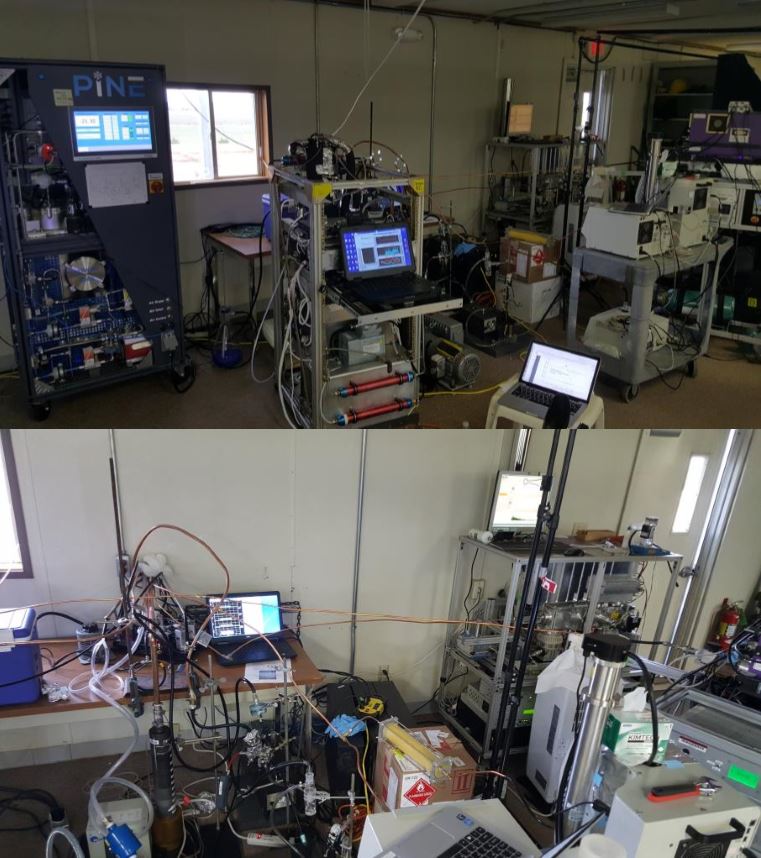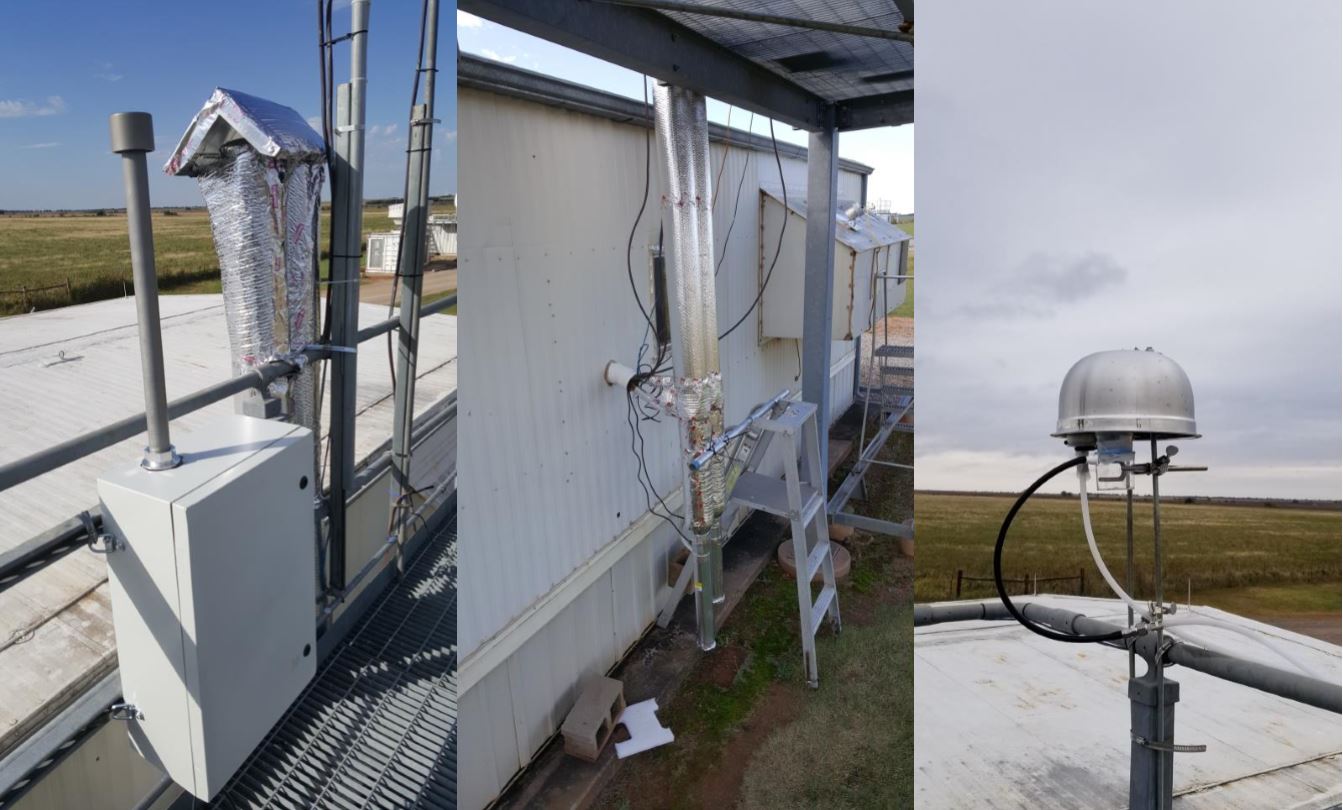Closing Out the Ice Formation Closure Study
Published: 30 October 2019
Editor’s note: Daniel Knopf is the principal investigator (PI) of the Aerosol-Ice Formation Closure Pilot Study (AEROICESTUDY). It is the first attempted study of its kind at ARM’s Southern Great Plains (SGP) atmospheric observatory. Knopf, a professor in the School of Marine and Atmospheric Sciences at Stony Brook University in New York, sent in this update.

Greetings from the field! We are in the final days of our ground-based field campaign at the SGP in Oklahoma. The goal of this campaign is to improve our understanding of how atmospheric ice crystals form from ambient aerosol particles and, thus, to provide guidance in suitable parameterizations for implementation in cloud and climate models. For this reason, we are out here in the Guest Instrument Facility (GIF) housing to examine how we can achieve closure between measured aerosol particle properties and observed ice-nucleating particle (INP) number concentrations. Closure here means that we aim to predict observed INP numbers by knowledge of the physicochemical characteristics of the ambient aerosol population applying published ice nucleation rates and parameterizations.
This is a multi-PI and multi-institutional effort of the ice nucleation community, and despite being a small pilot campaign, the GIF housing is buzzing with instrumentation, as you can see in the pictures. This includes online aerosol mass spectrometers, aerosol sizers, online INP instrumentation, and offline particle collection for single particle micro-spectroscopic analysis and ice nucleation experiments.
A particular focus was placed on the role of larger ambient particles (larger than 1 micrometer in size) to act as INPs. To improve the collection efficiency of these larger particles at GIF, we built new sampling stacks with the wonderful help of the local ARM site staff! Most of the instrumentation sampled concurrently from these stacks, ensuring the same air mass and particle population.
The next months will be exciting. Only post-analyses of our data will show us how close we got to achieve closure (or, how well we can predict INP numbers from complex ambient aerosol) and how aerosol sampling and characterization could be improved to allow the collection of aerosol data sets that can be used for such aerosol-ice formation closure exercises.

Keep up with the Atmospheric Observer
Updates on ARM news, events, and opportunities delivered to your inbox
ARM User Profile
ARM welcomes users from all institutions and nations. A free ARM user account is needed to access ARM data.


















